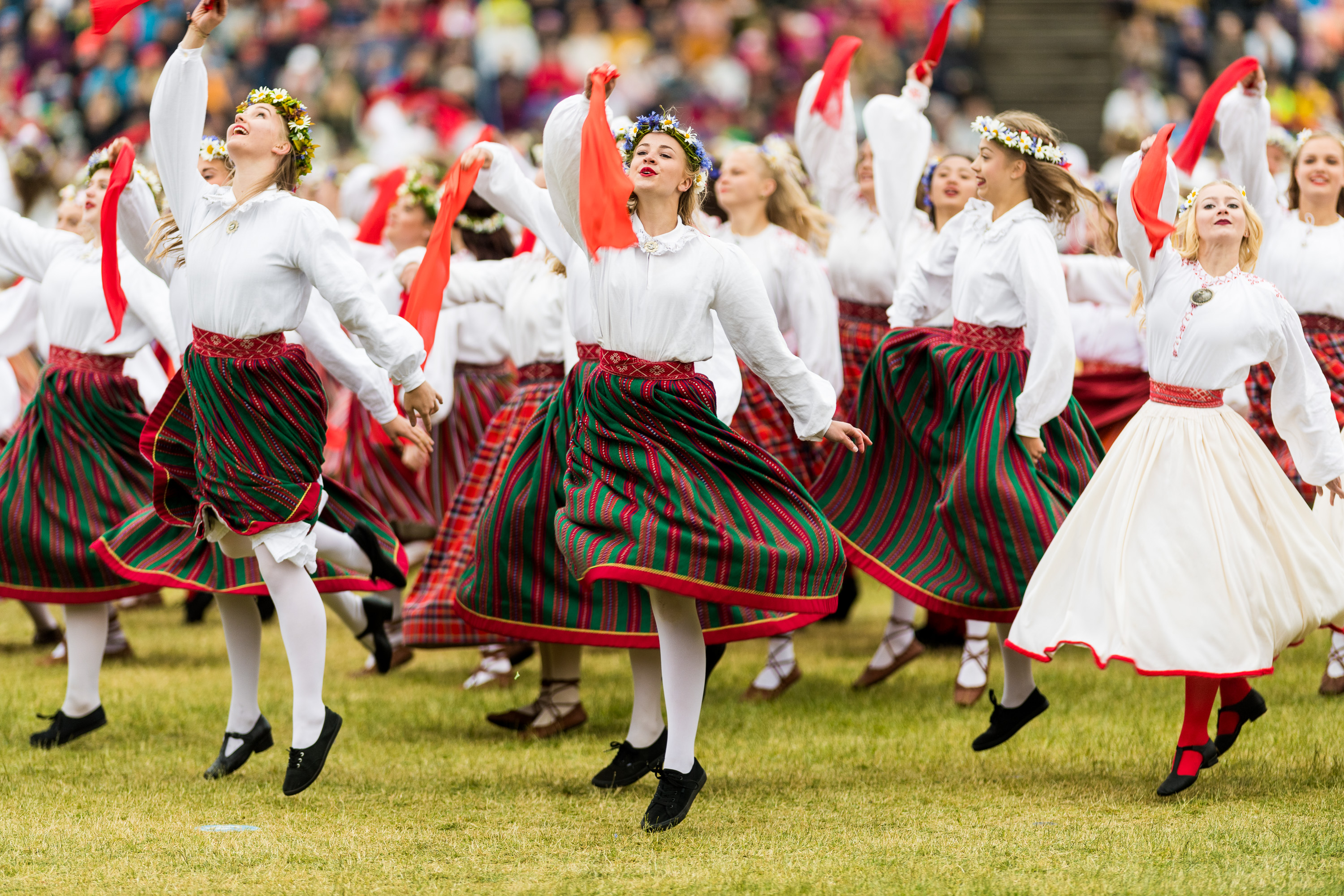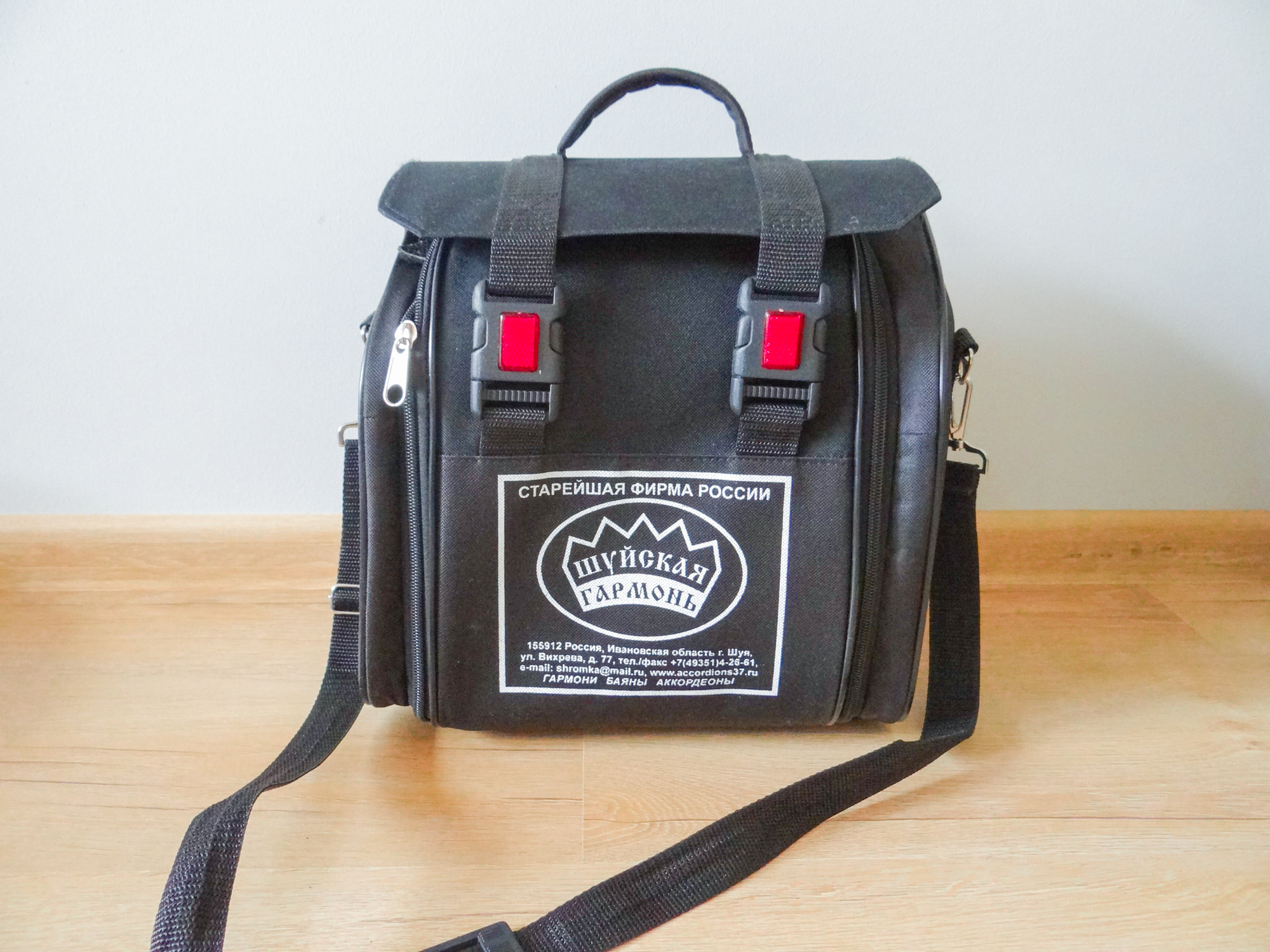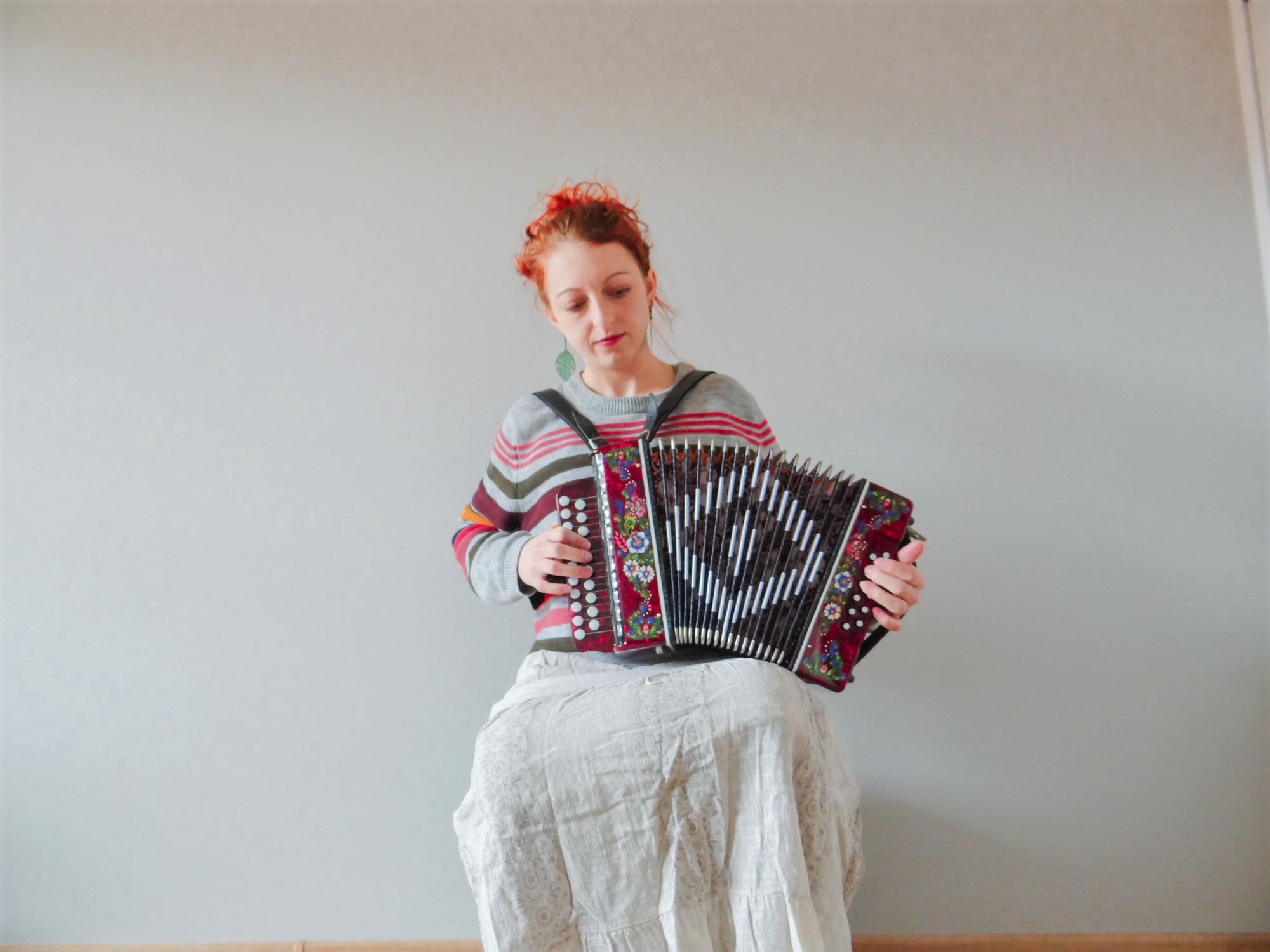This blog post was written by Marina Loch. Marina originally came to Estonia for the Erasmus exchange semester during her undergrad studies, but loved it so much that she is now doing Veterinary Medicine PhD at Estonian University of Life Sciences. Veterinary students spend many hours behind books and on farms, but they also have free time. What does Marina do in her spare time? How does she discover her Estonian-ness?
I’ll start by saying that I used to play the piano a bit, but when you travel all the time and move a lot, it’s not the best instrument for a regular practice. My high school dance teacher once told me I have no sense of rhythm, and sometimes, I can still hear her angry voice shout at me: “Five, six, seven, eight!”
But I live in Estonia now, and I have developed the theory that every Estonian has, at least at one point in their life, done at least one of three things: singing in a choir, playing an instrument, dancing folk dance.

Estonian folk dancers
I guess singing in a choir would be a great way to learn Estonian (and I know an American who developed perfect Estonian pronunciation thanks to that!), but I don’t have the courage. Dancing… well, you read it. So playing an instrument would be what I had to try to become more Estonian. But what and how? I knew this time I wanted to go at it differently: It should be an instrument that I could carry around anywhere, and I wanted to really understand it, not just learn one song after the other without actually knowing what I was doing.
Like the decision to come to Estonia in the first place, the decision what I would learn was a true gut-decision. I was in the car with an Estonian family, and we were singing along to our favorite songs by Estonian bands. Then “Karmoškale” by Jalmar Vabarna came on. I didn’t know what the song was called, and I thought it was played on an accordion. “Oh”, I said, “I just love the sound of accordion! I wish it weren’t such a complicated instrument to learn!”
Liilia, who was driving, laughed. “Well, you’re in luck. This is a karmoška. It’s from Russia, but basically a Seto instrument, and here in South Estonia, lots of people play it. It is about a third the size and weight of an accordion, and much, much easier to learn. After one lesson, you will already know a song!”
That sounded promising. I was with the family for one of the children’s birthdays. It was a typical Estonian party: bonfire, barbeque, sauna, potato salad, sleepover… And most importantly, at some point, as people sat around the fire, someone took out their instrument and started playing. A second person joined. I sat and listened and felt myself in heaven. They were playing folk songs on karmoška and lõõts (another Estonian accordion-variation).

Photo: My karmoška
The very next day, I looked up music schools in Tartu.
I guess it is possible to find a private teacher. But the most common way for Estonians to learn an instrument is to go to music school. There, they have the instrument classes (one on one) as well as music theory (in a group). As they advance, they can also learn composing, or join an “ansambel”, which is basically a band. I found a music school near me and emailed them: Would they teach an adult whose Estonian was not the best?
They would, and they told me to come by. So I went, introduced myself, they explained that they had a music theory class for adults as well, that a karmoška teacher was ready to teach me in English if needed, and then – they asked me what I was going to sing. Thus far, the conversation had been in Estonian, but now I asked them to repeat in English, just to be sure. I realized a very important thing: You can’t just sign up for music school, you have to audition. Well, bless Curly Strings and singing along in the car! I managed to recite “Laul sõbrale” ( “Song for a friend”, also written by Jalmar Vabarna; a true Estonian musician, he is active in multiple bands) to the teacher’s content. I was in.
Now I had to get an instrument.
That proved more difficult than I had expected. See, they are usually played until they fall apart, so used ones were not for sale. This particular music school also didn’t rent out instruments, as many schools do. For karmoška, you are left with two options: Buying an Estonian-built one for a four-digit sum, or having an affordable one imported from the Russian part of Setomaa. So I wrote to the importer on Facebook to ask what he could offer me. Two months later, at a gas station, I exchanged over 500 euros in cash for my very own karmoška. It came with a ag with a kyrillic logo, but the story of how it was almost mistaken for a bomb in two airports is for another time.

Me playing karmoška.
I started my lessons, and really was able to play a tiny song after the first one.
These lessons are very bilingual, as there are many words that I don’t know in Estonian, and many music-related words that neither my teacher nor I know in English. Music theory is an adventure. In the beginning, we learned things like reading notes, what is a scale, what are major and minor, and so on. I knew this stuff, just not in Estonian.
The teacher was the only one who knew from the beginning that I was a foreigner, and every once in a while she would stop her explanations and ask: “Marina, kas sa said aru?”(“Marina, did you understand?”); and my answers were often single words or grammatically incorrect sentences. The other students probably thought I was mentally challenged. The lectures got harder, we had to learn to say the specific notes the teacher played for us on the piano, remember rhythm sequences, and learn the coordination of the two hands.
All of this is extremely useful when learning any instrument, of course. Especially so for karmoška, as this instrument requires not only that the two hands do different things, but one also has to push and pull while continuing the rhythm; and because it is traditionally learned by hearing. You read correctly, for many songs there are no sheet notes. My teacher plays for me, I listen, memorize, and play after her. This can lead to students not knowing the names of the tones they are playing – but then she will say “Nonono, this must be A”, and how would I know which one is the A? So yes, I study the theory harder now.
After a few months, and many cancelled lessons due to Covid, there came another surprise: class concerts. Now what was that about? My teacher told me which song I knew best and should perform there. I was not ready to perform!
The class concerts turned out to be quite ok. A hand full of students were grouped together, and each played one song for the others and the teachers. In our case, it was two karmoška students, three saxophone students, and three teachers. We then evaluated our own performance and progress, and gave feedback to the others. And this is where I had to switch into English and finally, finally, they all found out that I was not mentally challenged, but simply doing all of this in a foreign language. Needless to say, they were more impressed by that than my performance of a four-line song. The class concerts are a way for students and teachers to regularly check in on progress, just like exams at the end of a semester, and they are really useful.
By now, I have reached a point where I asked to learn one of the songs from my Spotify-like-list.
I guess with every potato salad you make, every time you go to the sauna, learn a new phrase, or start a very Estonian hobby, you become more Estonian. I have even inspired a nine-year old, and we recently sat together to play our karmoškas together, us two beginners. He doesn’t speak a word of English. I am very proud of how far I’ve come, and the Estonians are happy to make me one of them.
I can only encourage you to go for it. Be it music school, dancing, joining a choir, or anything else!
Join. Learn. Explore.
Try something new. Discover your own Estonian-ness!
Read more blog posts:
- Leaving Estonia? Take the Freedom You Found With You!
- Life in Bear’s Bottom: Living On an Estonian Sheep Farm
- Are You Productive or Just Busy? How to Make the Most of Your Time
- From Mexico to Estonian winter
- My First Year in Estonia: A Review
